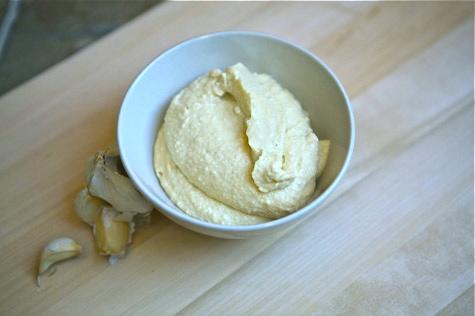
Recently, I wrote a review of that versatile, that visionary, that ever-variable chameleon they call hummus. In response, a number of readers requested my recipe. I’d considered it prior, but to be honest, it just didn’t seem fair. You see, the elegance of hummus is in its simplicity. Posting a ‘recipe’ would feel like cheating on substance. It’s too easy!
But clearly, a recipe is necessary. It’s foundational; the keystone to an entire cache of vegan culinary creations. You must master the primary construction of hummus.
So I devised a scheme, to give you guys the fundamentals you’ll need – the most basic bare-bones hummus how-to – without compromising my quality of content.
I’ve spent the past week entirely immersed in hummus. I slow-cooked an entire pound of chickpeas, and over the course of the week I’ve pounded them, blended them, seasoned them, roasted them, styled them, and photographed them in every iteration or adaptation my little mind could imagine. We’ve eaten hummus every day, sometimes more than once, slathered on veggies, stuffed into pita, clinging to falafel, squished between tortillas, riding on corn chips, rolled up in wheat wraps, and even as dressing on salad. It’s been a tough trail to blaze, but somebody had to do it!
And so here it is, a not-even-close-to-comprehensive guide to what can be done to this spectacular schmear.
We’ll start at the very beginning, a very good place to start.
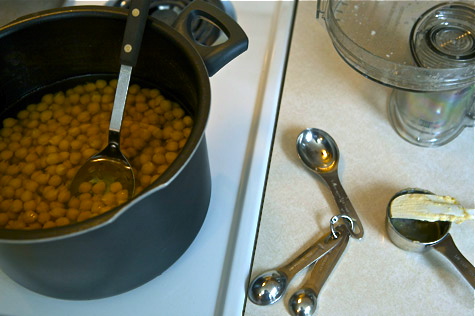
Ingredients:
1 cup chickpeas (aka garbanzo beans), canned or home cooked, drained and rinsed
2 heaping tablespoons tahini
2 tablespoons fresh squeezed lemon juice
1/4 cup ‘liquid’ (half water / half olive oil if you’re concerned with fat, or all olive oil if you’re concerned with flavor, or any ratio in between)
2 cloves garlic
seasoning of choice, added to taste
Instructions:
Place all ingredients, except spices, in the bowl of a food processor. If you don’t have a food processor you can use a blender, or an immersion blender, or a potato masher, or a mortar and pestle (old school style!), or whatever you have around. You get the idea.
Blend, blend, blend until smooth and creamy. You may have to add water (or oil) to thin it out. Mix it good and long to get it nice and creamy, and then add your spices to taste. Seasonings may include salt, cumin, garam masala, garlic or onion powder, paprika or cayenne, oregano, basil, dill, thyme, or anything else you fancy. It’ll take a few batches of playing around, but you’ll figure out your favorite ratio pretty quickly. Give it a final blend, and you’re ready to go!
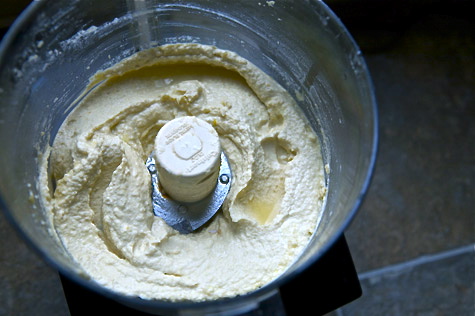
From there, you can do almost anything. I’m not going to offer specific recipes, but here’s just a few of my favorites themes from my extensive experimentation.
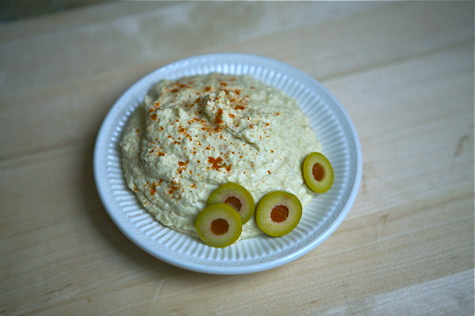 Chunky Olive Hummus, garnished with cayenne and slivered greens.
Chunky Olive Hummus, garnished with cayenne and slivered greens.
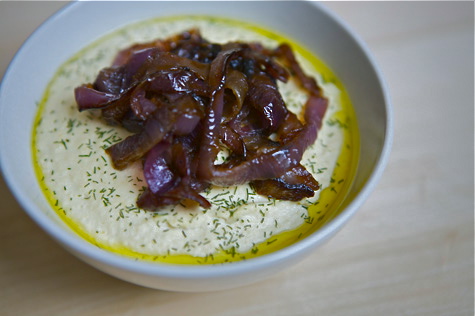 Hummus topped with Caramelized Red Onion and Dill, drizzled with olive oil.
Hummus topped with Caramelized Red Onion and Dill, drizzled with olive oil.
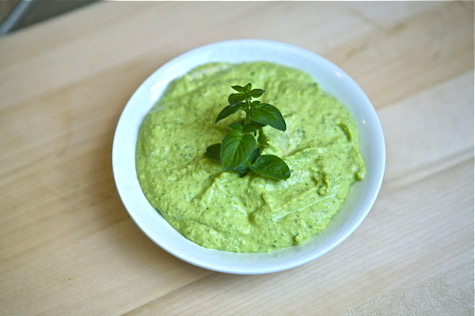 Green Garden Hummus with spinach and freshly snipped herbs. I grow parsley, oregano, and thyme. Topped with a sprig of oregano.
Green Garden Hummus with spinach and freshly snipped herbs. I grow parsley, oregano, and thyme. Topped with a sprig of oregano.
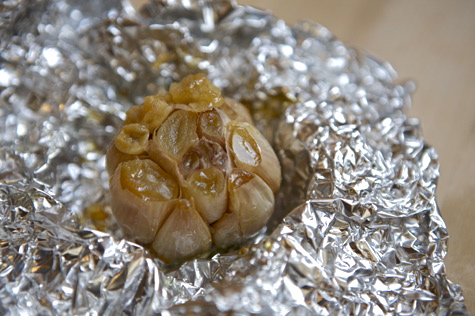
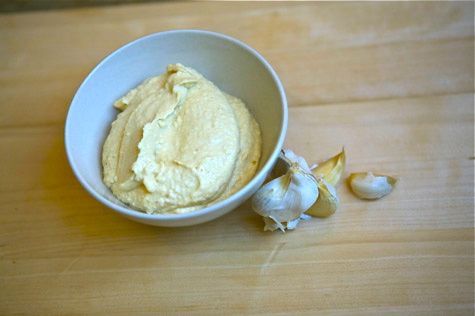 Super Über Garlicky Goodness, with an entire roasted head. This one hurt! Whew!
Super Über Garlicky Goodness, with an entire roasted head. This one hurt! Whew!
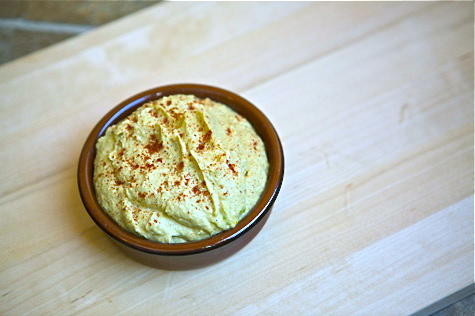 Spicy Avocado Chipotle Hummus, dusted with chili and drizzled with lemon.
Spicy Avocado Chipotle Hummus, dusted with chili and drizzled with lemon.
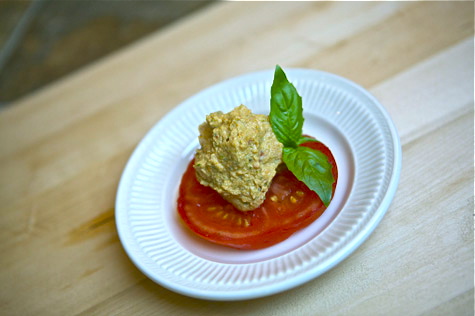 Sun-dried Tomato and Basil Hummus, served on a thick fresh slice.
Sun-dried Tomato and Basil Hummus, served on a thick fresh slice.
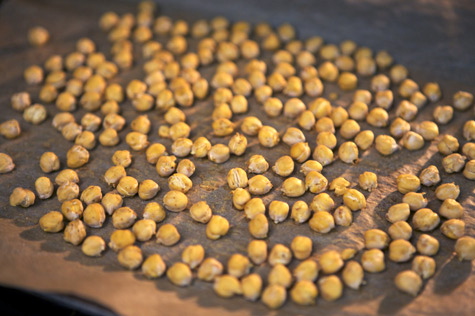
 Oven Roasted Chickpea Hummus. This one is great if you want to leave out the olive oil altogether, because the roasting adds a great full-bodied flavor. Cooked in cumin and curry spice, and dusted with cayenne, cumin, and turmeric.
Oven Roasted Chickpea Hummus. This one is great if you want to leave out the olive oil altogether, because the roasting adds a great full-bodied flavor. Cooked in cumin and curry spice, and dusted with cayenne, cumin, and turmeric.
I certainly hope I’ve left you inspired. Clearly, your options are endless, and the flavor combinations are infinite. I’m sure you’ll have as much fun as I did, trying to taste them all! And don’t forget to share your favorite creations!





Pingback: Another Lost Weekend | Bonzai Aphrodite
Pingback: The Many Lives Of Kale // or // How To Get The Very Most Value Out Of Your Vegetables, Both Nutritionally and Financially | Bonzai Aphrodite
Pingback: The Science Of Salad: How To Make A Salad That Serves As A Real Meal, And Actually Keeps You Feeling Full | Bonzai Aphrodite
Pingback: WIAW: Through the Mason Jar | Polymind